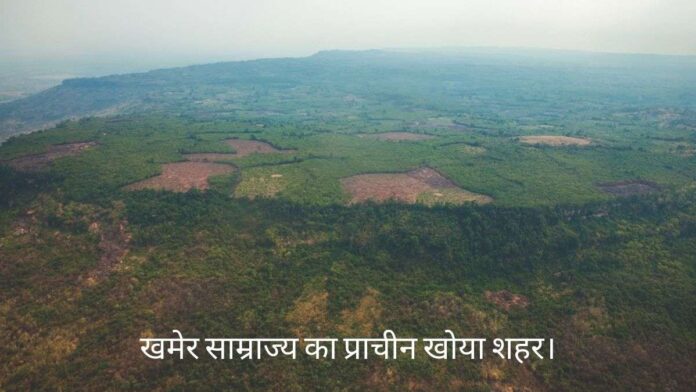The ancient Khmer Empire was a powerful and influential civilization that once ruled over much of Southeast Asia. Its capital city, Angkor, was home to over a million people and was one of the largest cities in the world at its peak. However, as with many great civilizations, the Khmer Empire eventually declined, and its once-great cities were lost to the ages. One of these lost cities, known as Mahendraparvata, has recently been rediscovered by archaeologists. In this article, we will explore the history of the Khmer Empire, the discovery of Mahendraparvata, and what it can teach us about this fascinating civilization.
Contents
History of the Khmer Empire
The Khmer Empire was founded in the 9th century by Jayavarman II, who united the disparate Khmer tribes under his rule. Under subsequent rulers, the empire expanded its territory and grew in wealth and power. The empire reached its zenith in the 12th century under the rule of Jayavarman VII, who built many of the impressive temples and monuments that are still standing today.
The Khmer Empire was known for its sophisticated irrigation systems, which allowed farmers to cultivate rice in the fertile floodplains of the Mekong and Tonle Sap rivers. This agricultural abundance allowed the empire to support a large population, which in turn allowed for the development of a complex society with a rich culture.
However, the Khmer Empire began to decline in the 13th century due to a combination of factors, including internal conflicts, external invasions, and environmental changes. The capital city of Angkor was eventually abandoned, and the Khmer people dispersed throughout the region.
The Discovery of Mahendraparvata
Mahendraparvata was one of the many cities built by the Khmer Empire, but it was lost to history for centuries. However, in 2012, a team of archaeologists from Australia and Cambodia discovered the lost city using advanced aerial mapping techniques.
Mahendraparvata is located in the Phnom Kulen mountain range in northern Cambodia, and it was likely a major religious and administrative center for the Khmer Empire. The city is believed to have been built in the 9th century, around the same time as the founding of the Khmer Empire.
The city is surrounded by a series of canals and reservoirs, which were used for irrigation and to control flooding. The city itself was built on a hilltop and was likely home to a large population of priests, administrators, and artisans.
What Can Mahendraparvata Teach Us About the Khmer Empire?
The discovery of Mahendraparvata has shed new light on the history of the Khmer Empire and its complex society. The city’s strategic location in the mountains suggests that it played an important role in the empire’s political and religious affairs.
The city’s impressive water management system also highlights the Khmer Empire’s advanced knowledge of engineering and agriculture. The empire’s sophisticated irrigation systems allowed it to support a large population and build impressive cities and monuments.
Furthermore, the discovery of Mahendraparvata has raised important questions about the decline of the Khmer Empire. The city was abandoned in the 14th century, around the same time that the empire began to decline. The reasons for the empire’s decline are still not fully understood, but the discovery of Mahendraparvata provides new clues that could help historians unravel this mystery.
Conclusion
In conclusion, the discovery of Mahendraparvata has provided valuable insights into the history of the Khmer Empire. This lost city, which was once a thriving center of power and culture, had been hidden from the world for centuries. Thanks to the use of new technology and archaeological techniques, researchers were able to uncover the city’s ruins and piece together its story. Mahendraparvata has revealed a great deal about the economic, social, and religious practices of the Khmer people, as well as the city’s decline and eventual abandonment.
As we continue to explore the remains of the Khmer Empire, it is important to remember the significance of Mahendraparvata. The city’s discovery has opened up new avenues of research and allowed us to gain a deeper understanding of this once-great civilization. However, it also serves as a reminder of the fragility of human achievements and the importance of preserving our cultural heritage for future generations to come. The lost city of Mahendraparvata is a testament to the incredible achievements of the Khmer people, and its rediscovery is a remarkable feat of modern archaeology.
Sources
- Chandler, D. P. (2000). A history of Cambodia. Westview Press.
- Higham, C. (2014). Early Mainland Southeast Asia. River Books.
- Evans, D., Fletcher, R., Pottier, C., Chevance, J. B., Soutif, D., Tan, B. S., … & Barbetti, M. (2013). Uncovering archaeological landscapes at Angkor using LiDAR. Proceedings of the National Academy of Sciences, 110(31), 12595-12600.
- Bong, R., Fletcher, R., Cromarty, C., O’Reilly, D., Innes, J., Vuthy, S., & Soutif, D. (2016). Discovery of Mahendraparvata, a lost city of Cambodia. Antiquity, 90(352), 1632-1657.
- Groslier, B. P. (1979). Indochina: An introduction to the art of ancient civilizations. Weatherhill.
- Higham, C. (2003). The civilization of Angkor. University of California Press.
- Coedès, G. (1963). The Indianized states of Southeast Asia. The University of Hawaii Press.
FACT CHECK: We strive for accuracy and fairness. But if you see something that doesn’t look right, please Contact us.
DISCLOSURE: This Article may contain affiliate links and Sponsored ads, to know more please read our Privacy Policy.
Stay Updated: Follow our WhatsApp Channel and Telegram Channel.













waterfallmagazine.com
I love what you guys tend to be up to. This type of clever work and exposure!
Keep up the superb works guys I’ve included you guys to blogroll.